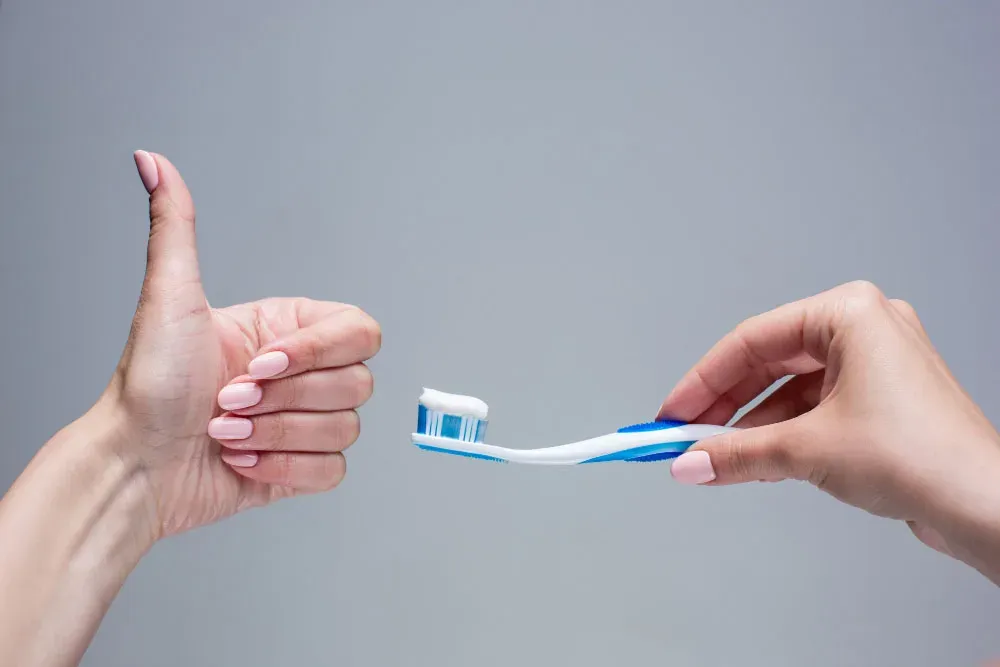Maintaining good oral health starts with choosing the right toothbrush and toothpaste. With so many products available, it can be overwhelming to know which options are best for you. Whether you’re focusing on sensitive teeth, plaque control, or eco-friendly alternatives, finding the right products tailored to your specific needs is essential. This guide will break down the process, helping you make informed decisions for a healthier smile.
Why You Should Choose the Right Toothbrush and Toothpaste
A healthy smile is more than just aesthetics; it’s a sign of overall oral health. The right toothbrush and toothpaste can play a significant role in maintaining this health.
- Effective Cleaning: The right tools can thoroughly remove plaque and food particles, preventing cavities and gum disease.
- Gum Health: Soft-bristled toothbrushes can prevent gum irritation and recession.
- Whitening: Certain toothpastes can help brighten your smile.
- Sensitivity Relief: Specially formulated toothpastes can soothe sensitive teeth.
- Overall Oral Health: A healthy mouth contributes to overall well-being.
- Prevention of Dental Issues: Regular use of the right tools can help prevent future dental problems.
- Cost-Effectiveness: Investing in quality dental care products can save you money in the long run by preventing costly treatments.

How to Choose the Right Toothpaste
Selecting the right toothpaste is just as important as picking the right toothbrush. With so many options, it’s vital to choose one that addresses your oral health concerns.
- Fluoride: Most dentists recommend using toothpaste with fluoride, as it helps prevent cavities by strengthening the enamel and protecting teeth from decay.
- Whitening Toothpaste: If you want to remove surface stains and brighten your smile, whitening toothpaste can be a good option. However, use it sparingly, as frequent use can erode enamel over time.
- Toothpaste for Sensitive Teeth: For those with tooth sensitivity, toothpaste containing potassium nitrate or stannous fluoride can help reduce discomfort and protect exposed tooth roots.
- Plaque and Tartar Control: If you are prone to plaque buildup or gum disease, choose toothpaste formulated to target plaque and tartar. These products contain active ingredients to prevent the hardening of plaque, which leads to tartar formation.
How to Choose the Right Toothbrush
Choosing the right toothpaste may seem simple, but with so many options on the market today, it can be overwhelming. From whitening formulas to those designed for sensitive teeth, there’s a wide range of choices. So, how do you know which one is best for you? Here are some key factors to consider when selecting the perfect toothpaste for your needs:
- Check the Ingredients: Before buying any toothpaste, examine the list of ingredients. This will give you insight into the benefits and results you can expect. For instance, if you have sensitive teeth, look for ingredients like potassium nitrate or strontium chloride, which can help reduce sensitivity.
- Consider Your Dental Needs: Do you need basic cleaning, or are you dealing with specific dental concerns? If you struggle with plaque buildup or cavities, choose a toothpaste containing fluoride to strengthen enamel and prevent decay. If your goal is whitening, look for toothpastes that contain hydrogen peroxide or baking soda to brighten your smile.

Understanding Different Types of Toothbrushes
When it comes to toothbrushes, the variety of choices can be confusing. Let’s explore the key types and what factors to consider:
- Manual vs. Electric Toothbrushes: Manual toothbrushes are cost-effective and simple, but electric toothbrushes can provide a deeper clean, especially for those who struggle with technique or have limited dexterity. Electric toothbrushes offer features like timers and pressure sensors, which can improve brushing habits.
- Bristle Type (Soft, Medium, Hard): The type of bristles is one of the most important factors to consider. Soft-bristled toothbrushes are generally recommended for most people because they clean effectively without damaging gums or enamel. Hard bristles, while tempting for a more vigorous clean, can wear down enamel and irritate the gums over time.
- ADA Seal of Approval: To ensure safety and effectiveness, look for toothbrushes with the American Dental Association (ADA) seal of approval. This guarantees the product has been tested for quality and performance.
Each toothbrush type has its benefits, and understanding your specific oral health needs will help you make the right choice.
Matching Your Toothbrush and Toothpaste to Your Oral Health Needs
Your oral health needs may differ based on various conditions, and choosing the right products can make all the difference. Below are recommendations for common dental concerns:
- For Gum Disease: Use a soft-bristled toothbrush to avoid irritating sensitive gums, paired with antibacterial toothpaste to reduce inflammation and fight plaque that causes gum disease. To further enhance your gum care routine, consider incorporating Gingival Pro+ Mouthwash. Its main ingredient, Chlorhexidine Digluconate 0.2%, helps prevent the growth of microorganisms that contribute to plaque and gingivitis. Additionally, the natural extracts—Roman Chamomile for soothing, Green Tea for fighting plaque, and Aloe Leaf for quick healing—provide intensive care for gum health.
- For Sensitive Teeth: A soft-bristled brush combined with sensitive toothpaste that contains ingredients like potassium nitrate can help alleviate discomfort while providing gentle cleaning. To further soothe and protect sensitive gums, using Gingival Pro+ Mouthwash can also offer relief, as its herbal extracts reduce inflammation and promote healing.
- For Teeth Whitening, Opt for a medium-bristled toothbrush (used gently) and whitening toothpaste to lift surface stains. Just be cautious not to overuse whitening toothpaste, as it may erode enamel. Complement this routine with Gingival Pro+ Mouthwash to maintain oral health by protecting teeth from plaque and promoting gum healing.
- For Enamel Protection, fluoride toothpaste is essential. It strengthens teeth and prevents decay. Use this with a soft-bristled toothbrush to avoid further damage to weakened enamel. Incorporating Gingival Pro+ Mouthwash can further help by reducing bacteria and providing post-cleaning care, especially if the enamel has been weakened.

How Often to Replace Your Toothbrush and Toothpaste
To keep your oral hygiene routine effective, it’s important to replace your toothbrush regularly and ensure your toothpaste is still active.
- Toothbrush Replacement: Replace your toothbrush (or electric toothbrush head) every three months or sooner if the bristles are frayed. Worn bristles are less effective at cleaning teeth and can irritate gums.
- Toothpaste Shelf Life: Toothpaste has an expiration date—typically around two years—after which fluoride may lose its effectiveness. Always check the expiration date on your toothpaste to ensure it’s still providing proper protection.
Replacing these items regularly is key to maintaining a healthy and effective oral hygiene routine.
Common Mistakes to Avoid When Choosing Toothbrushes and Toothpaste
While selecting the right products is important, there are common mistakes people make that can undermine their oral health:
- Using Hard Bristles: Hard-bristled toothbrushes can cause gum recession and wear down enamel, so always opt for soft bristles.
- Overusing Whitening Toothpaste: Whitening toothpaste should be used in moderation, as overuse can erode enamel and lead to sensitivity.
- Ignoring Sensitivity: If you have sensitive teeth and continue using regular toothpaste, the issue could worsen. Switching to sensitive toothpaste can help reduce discomfort.
Avoiding these common pitfalls ensures that you get the most benefit from your toothbrush and toothpaste.
>>See more: Common Causes of Gum Disease and How to Prevent Them
In Conclusion
Choosing the right toothbrush and toothpaste tailored to your needs is essential for maintaining a healthy smile. By considering factors like bristle type, fluoride content, and your specific oral health concerns, you can select products that keep your teeth and gums in the best shape. For personalized advice, always consult with your dentist, who can guide you based on your unique dental health. Take the next step toward better oral care today by selecting the right tools for your smile!



